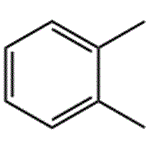Is o-xylene harmful to humans?
Jul 24,2024
Yes, o-xylene is harmful to humans. And the legal airborne permissible exposure limit (PEL) is 100 ppm averaged over an 8-hour workshift.
Eye: Causes severe eye irritation. Splashes of xylene in human eyes generally cause transient superficial injury.
Skin: May be harmful if absorbed through the skin. Xylene contact causes defatting of the skin with irritation, dryness, and cracking. Blistering may occur, particularly if exposure to concentrated xylene is prolonged and the exposed area of skin is occluded.
Ingestion: Aspiration hazard. May cause irritation of the digestive tract. May cause central nervous system depression, characterized by excitement, followed by headache, dizziness, drowsiness, and nausea. Advanced stages may cause collapse, unconsciousness, coma and possible death due to respiratory failure. May cause effects similar to those of acute inhalation.
Inhalation: Inhalation of high concentrations may cause central nervous system effects characterized by nausea, headache, dizziness, unconsciousness and coma. Prolonged exposure may result in dizziness and general weakness. Irritation may lead to chemical pneumonitis and pulmonary edema. May cause liver and kidney damage. Causes irritation of mucous membrane. Exposure may cause blood abnormalities. Odor is not an adequate warning for overexposure to xylene.
Chronic: Chronic exposure to xylene may cause defatting dermatitis, reversible eye damage, dyspnea (labored breathing), confusion, dizziness, apprehension, memory loss, headache, tremors, weakness, anorexia, nausea, ringing in the ears, irritability, thirst, mild changes in liver function, kidney impairment, anemia, and hyperplasia, but not destruction, of the bone marrow.

Dermal effects of m-xylene, o-xylene, or mixed xylenes in laboratory animal studies included skin irritation (erythema and edema) at topical doses as low as 2.3 mg/kg and more serious effects (eschar formation in some animals and epidermal thickening) at topical doses of ≥114 mg/kg. Rat skin that developed moderate erythema after treatment with m- or o-xylene exhibited increases in transepidermal water loss and increases in pro-inflammatory cytokines (interleukin 1-alpha and tumor necrosis factor-alpha).
- Related articles
- Related Qustion
- o-Xylene: Occurence, Uses, Environmental Fate, Toxicity Nov 13, 2019
o-Xylene (ortho-xylene) is an aromatic hydrocarbon with the formula C6H4(CH3)2. with two methyl substituents bonded to adjacent carbon atoms of a benzene ring (the ortho configuration).
Ammonium hydroxide is usually found in concentrations of up to 30% and is used in household cleaners, photography, fertilizers, textiles, rubber, and pharmaceuticals, as well as as a refrigerant.....
Jul 24,2024Inorganic chemistryHyaluronic acid is a natural active ingredient that belongs to the class of polysaccharides that can be produced by fermenting certain types of bacteria.....
Jul 24,2024Biochemical Engineeringo-Xylene
95-47-6You may like
- The toxicity of Bifenthrin
Jul 23, 2024
- The uses of 3-Methyl-1-butanol
Jul 15, 2024
- What is the difference between span 80 and Tween 80?
Jul 12, 2024
- o-xylene
-

- $20.00/ kg
- 2024-05-11
- CAS:95-47-6
- Min. Order: 1kg
- Purity: 98%
- Supply Ability: 20
- o-Xylene
-

- $100.00 / 1KG
- 2023-12-24
- CAS:95-47-6
- Min. Order: 1KG
- Purity: 99%
- Supply Ability: g-kg-tons, free sample is available
- o-Xylene
-

- $1.50 / 1g
- 2023-07-27
- CAS:95-47-6
- Min. Order: 1g
- Purity: 99.0% Min
- Supply Ability: 100 Tons






